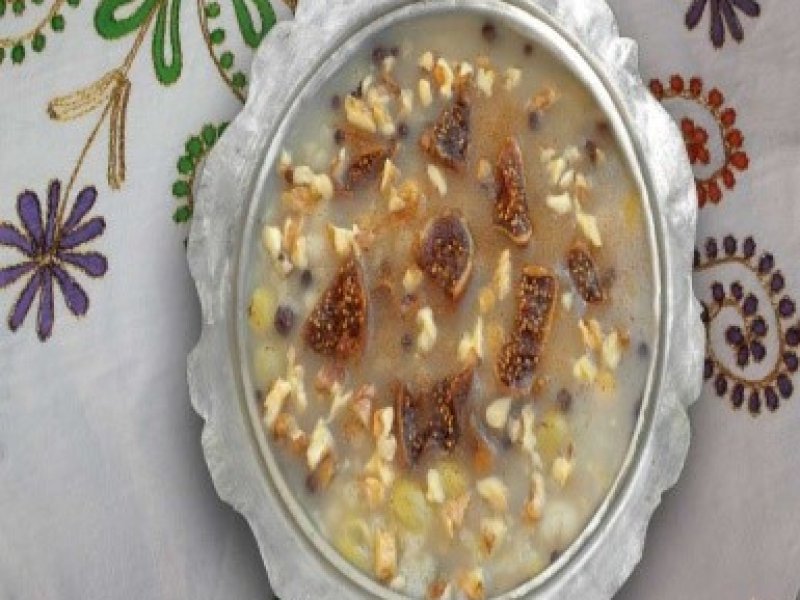Ashura, which is cooked among the peoples living in Anatolia, the Balkans, the Middle East and Central Asia, is known by names such as Aşır-aşura-âşûrâ. as legend has it, Ashura was prepared and cooked with the ingredients left after the survivors disembarked Noah's Ark (ship) after it rested on the dry land when the deluge (Noah's Flood) ended. It is believed that the ashura, which is cooked on the tenth day of Muharram (the first month of Islamic Lunar Calendar), will increase divine gifts (abundance and plentifulness) in the house where it is cooked and one who cooks it will get rid of one's worldly and spiritual troubles. Cooking ways and flavour of Ashura change according to the cultural characteristics and economic conditions of the society in which it is cooked. Ashura, which is prepared adding at least seven ingredients, is usually cooked with coarsely ground wheat, dried beans, chickpeas, rice, raisins, dried figs, apples, quinces or oranges, sugar, rose water, clove juice, and decorated with cinnamon, walnuts, pomegranate seeds, currants, almonds and chestnuts. For ashura with chestnuts, which is one of the traditional recipes, the chestnuts are cleaned out and boiled, then added to the ashura together with the boiled ingredients, the boiled chestnuts add flavor to the Ashura, and the dessert is also decorated with chestnuts.
As of the tenth day of Muharram, ashura, which is cooked widely in the city center, districts and villages of Bursa, is distributed by institutions or people who want to do charity in the city center on Fridays after Friday prayers. Apart from the month of Muharram, Ashura is also cooked for vows, for thanking Allah and for attracting abundance.



